Google Calendar, the Reminders app, scribbling notes on your arm: there are lots of different ways people keep track of their assignments and stay organized in college.
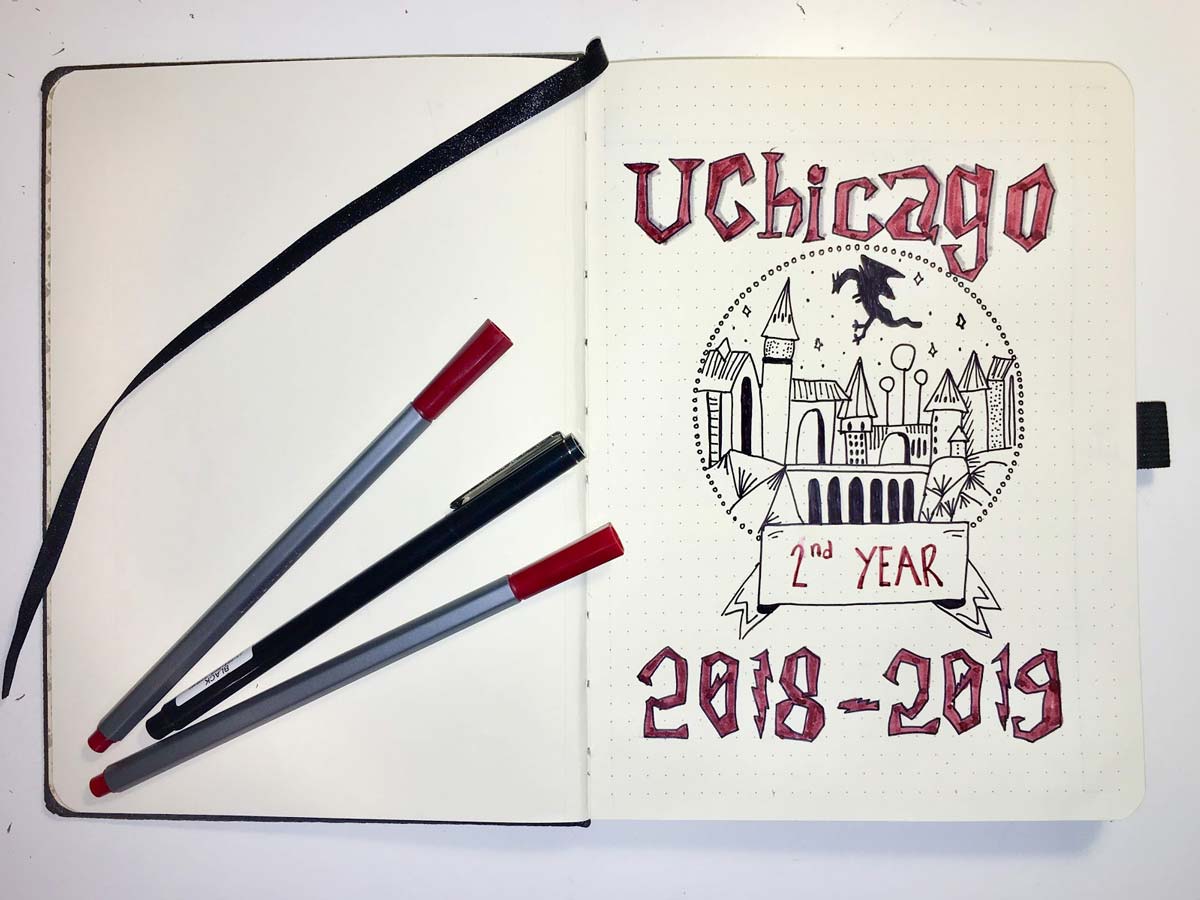
I’m here to share with you my favorite method: the bullet journal.
If you’re not particularly well-versed in the world of DIY planners, you’re probably wondering what exactly a bullet journal is. Here’s the answer: a bullet journal is whatever you want it to be.
Well, almost. Essentially, a bullet journal is a notebook that you can fill with to-dos, schedules, diary entries, habit trackers, goal markers, and more! There are a ton of different ways to organize a bullet journal, and I’m here to walk you through my process in the chance that it will inspire you!

I’ve always been a fan of handwritten planners, and I started bullet journaling before my second year of college because I was frustrated by the planners I was finding in stores. There wasn’t anything that gave me exactly what I wanted, so I decided to make my own.
Bullet journaling can involve keys in which different symbols stand for different things. For example, I use a closed circle to indicate something I have to do, an x to indicate that I’ve completed the task, and an arrow to show that I’m migrating the task to the next day. Some people also use different symbols for events, birthdays, and more!
Once I started, I realized how incredibly freeing it was to create each page from scratch. I could tailor each page and spread to fit my exact needs.
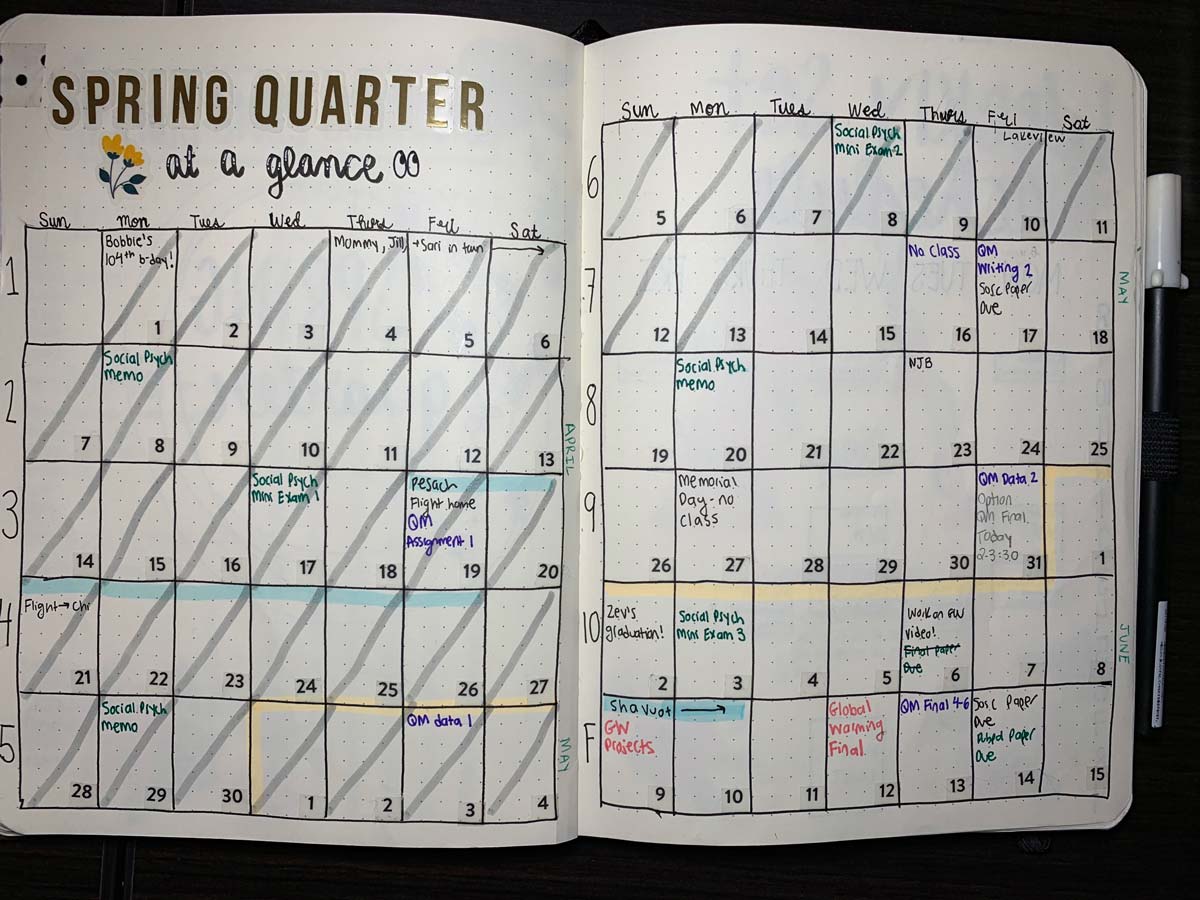
For example, I started the journal with a UChicago-specific overview of the year. I included finals dates, no-school days, and the Jewish holidays. I included each event that was important to me, without including anything extra. I have a year-long overview, three quarter-long overviews, and then month-long overviews.
The main thing I use my bullet journal for is writing down my daily assignments. To do this, I create spreads that span one week (a “weekly”) that usually includes one box for each day of the week. Here are some examples of weekly spreads I’ve made. Some pictures are from before the week started, and some have all of my assignments filled in!
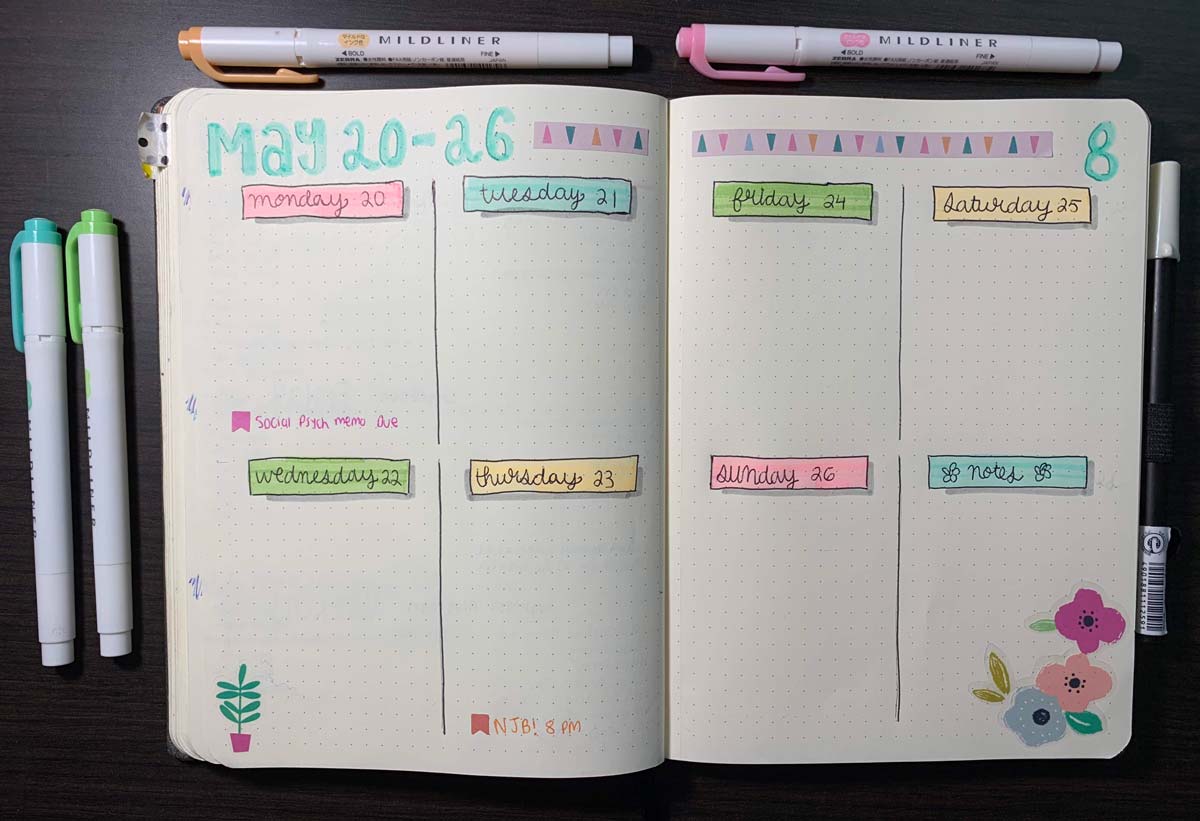
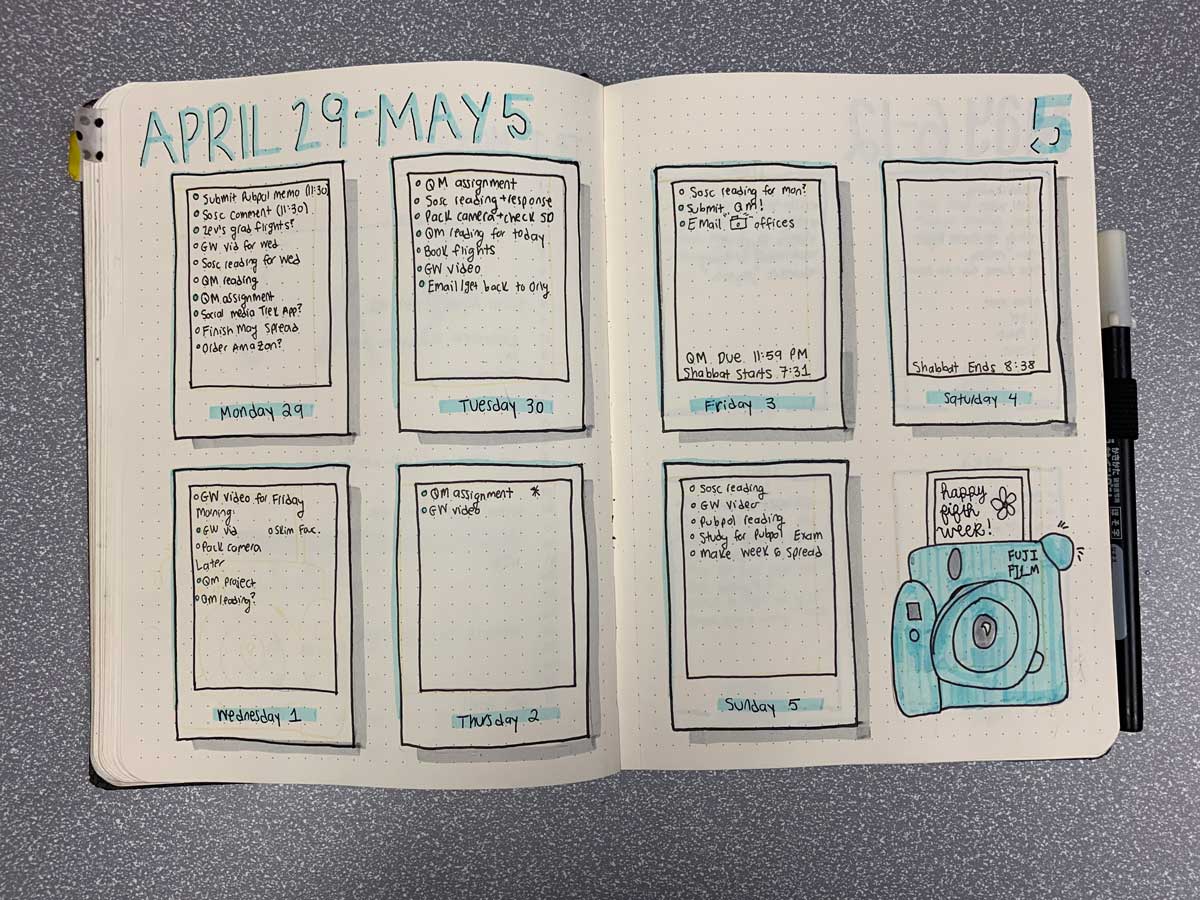
Because bullet journals are so customizable, you can tailor them to fit your precise needs. Take a look at how I organized my study time before finals week last winter.
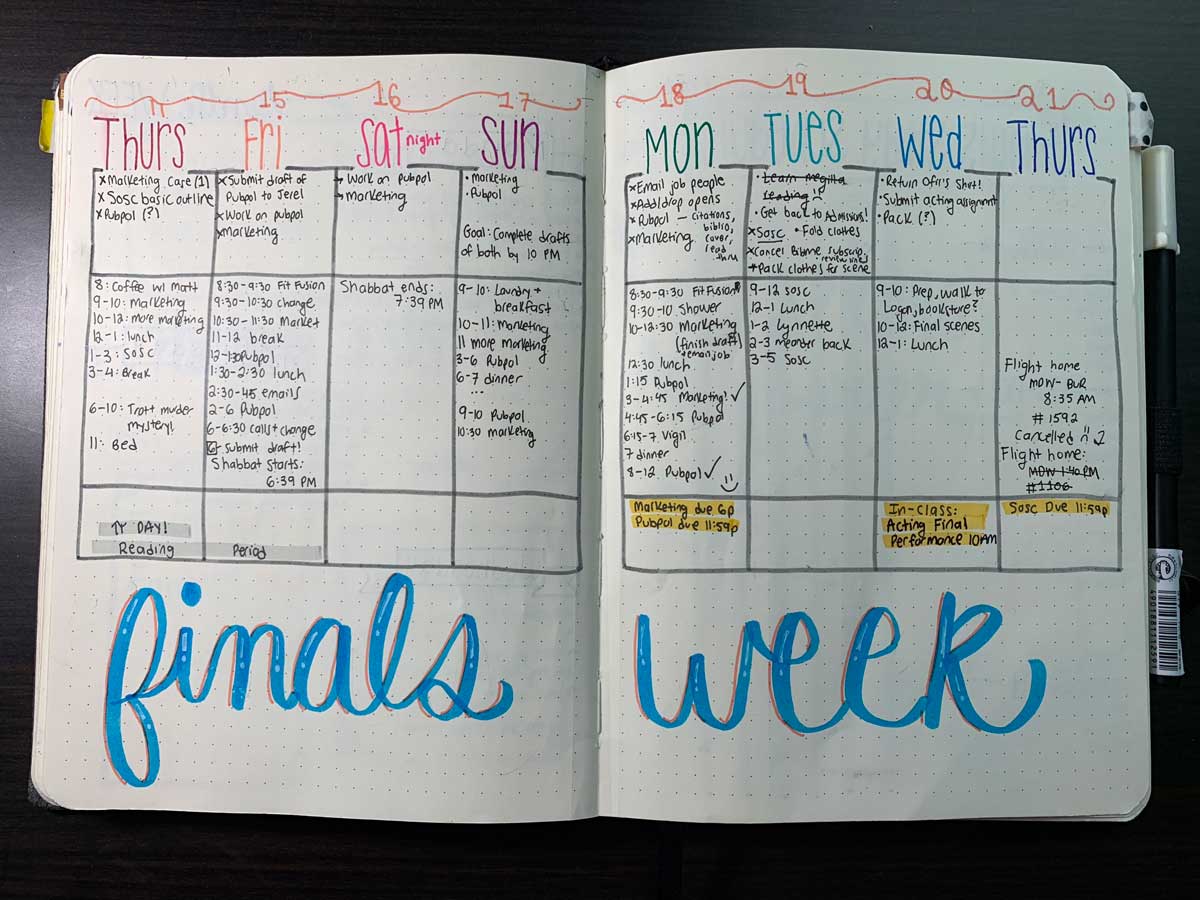
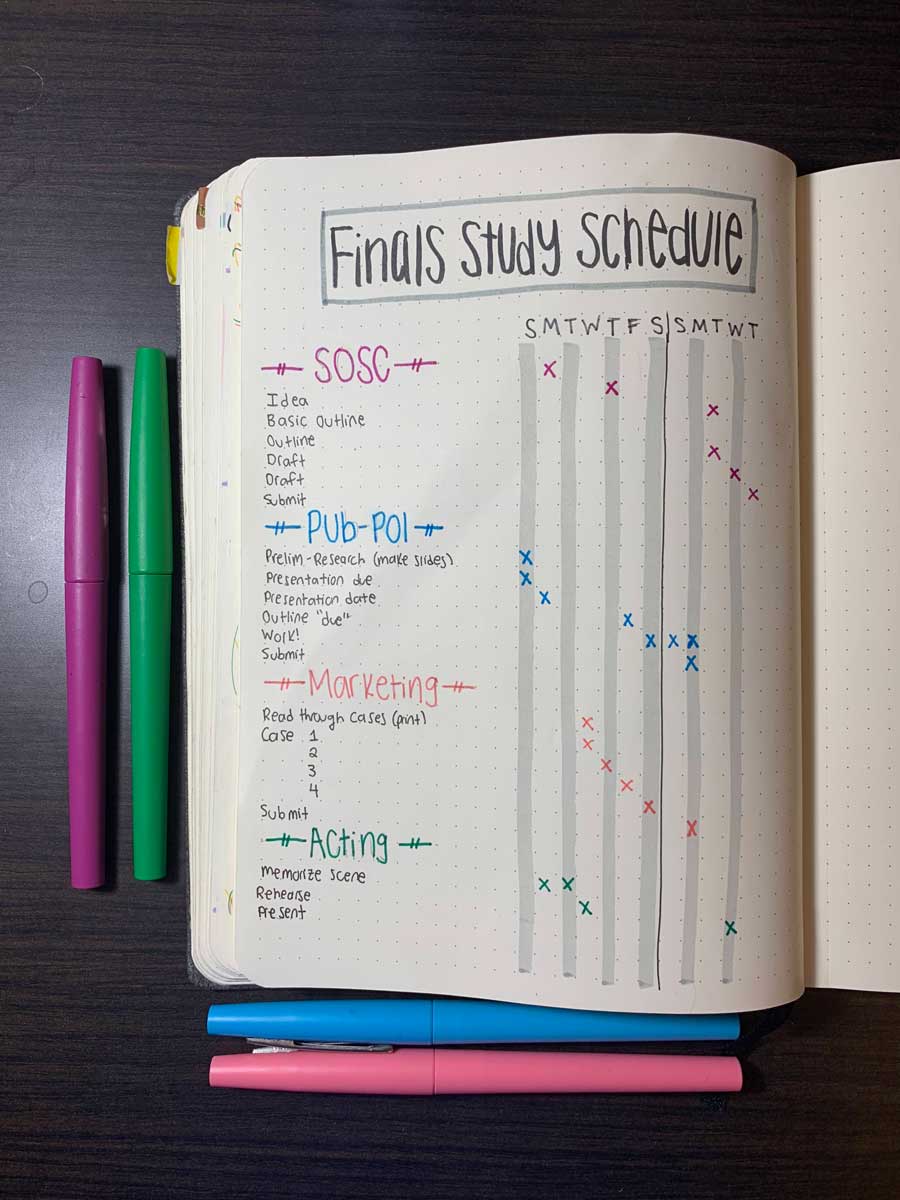
You can also use your bullet journal for non-study-related things, like packing lists, sleep trackers, or reading lists. The opportunities are endless.

Sometimes I create completely original spreads, and sometimes I base them off of others I find on Pinterest, Facebook, and Instagram. If you’re looking to get inspired, the hashtags #bulletjournal and #studygram might be a good place to start. I actually started my own Instagram page, @planwitheliana, in the hopes that anyone trying to start their own bullet journal might find inspiration.
Some of my favorite spreads started because of mistakes. For example, way back in November, I created a spread with floating boxes. When I was finished, I realized that I had miscounted – and only included six boxes, instead of seven. The horror! Never fear though, I came up with a solution that maintained my fall theme by adding a tree! The entire concept for this spread happened because of a mistake.

The things I’ve showed you are the things that work for me, but that doesn’t mean they have to work for you! My friend and roommate Grace also keeps a bullet journal, and hers looks completely different. Take a look at one of her daily to-dos: My style tends to be very bold and bright, each spread completely different from the last. Meanwhile, Grace’s pages are simple and uniform.
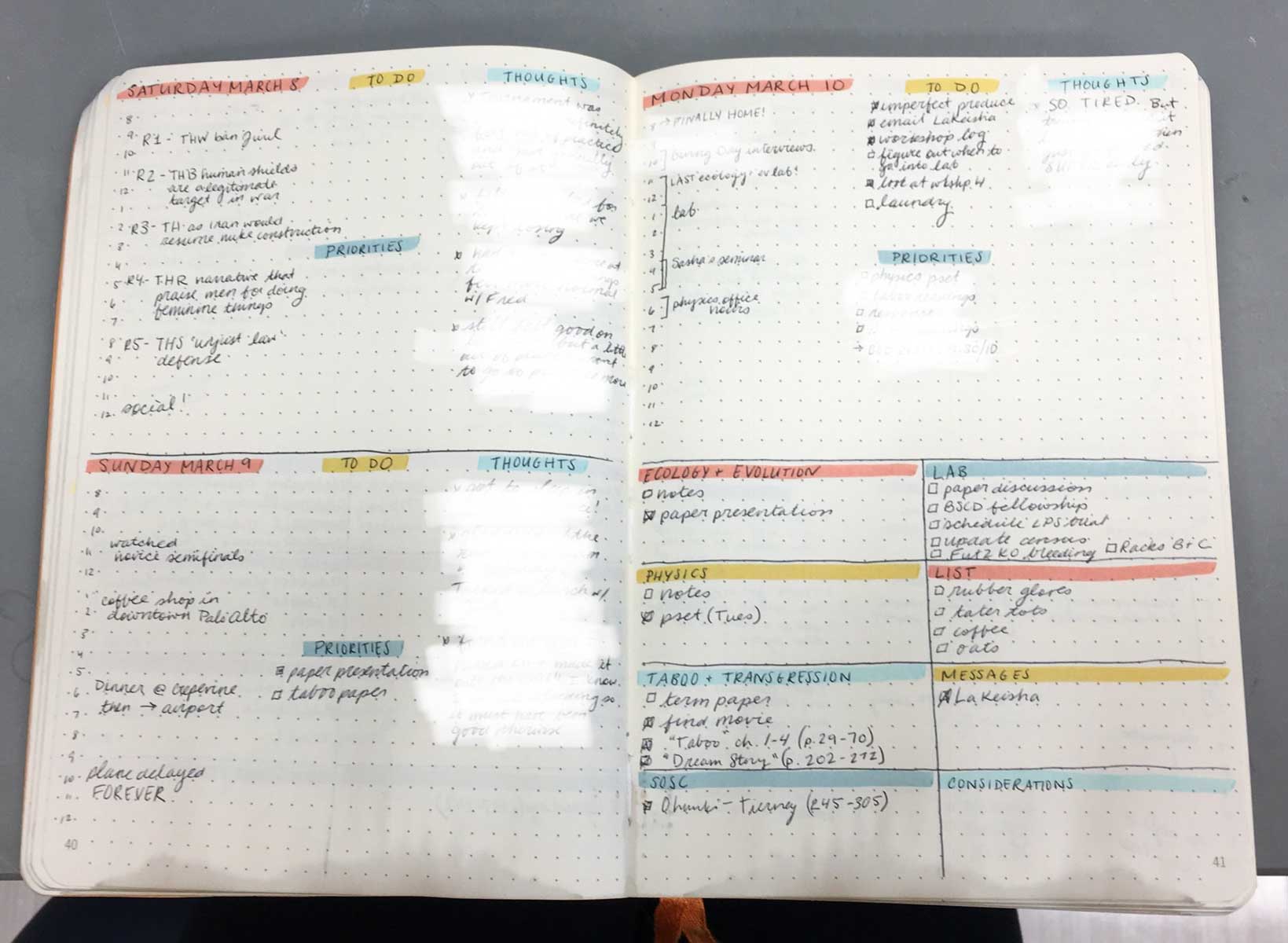
All you need to start a bullet journal is a notebook and a writing utensil. If you want to get fancy, I recommend a dotted notebook. I love using highlighters and brush pens to add flair. Add some planner stickers and washi tapes to the mix and you’re good to go!
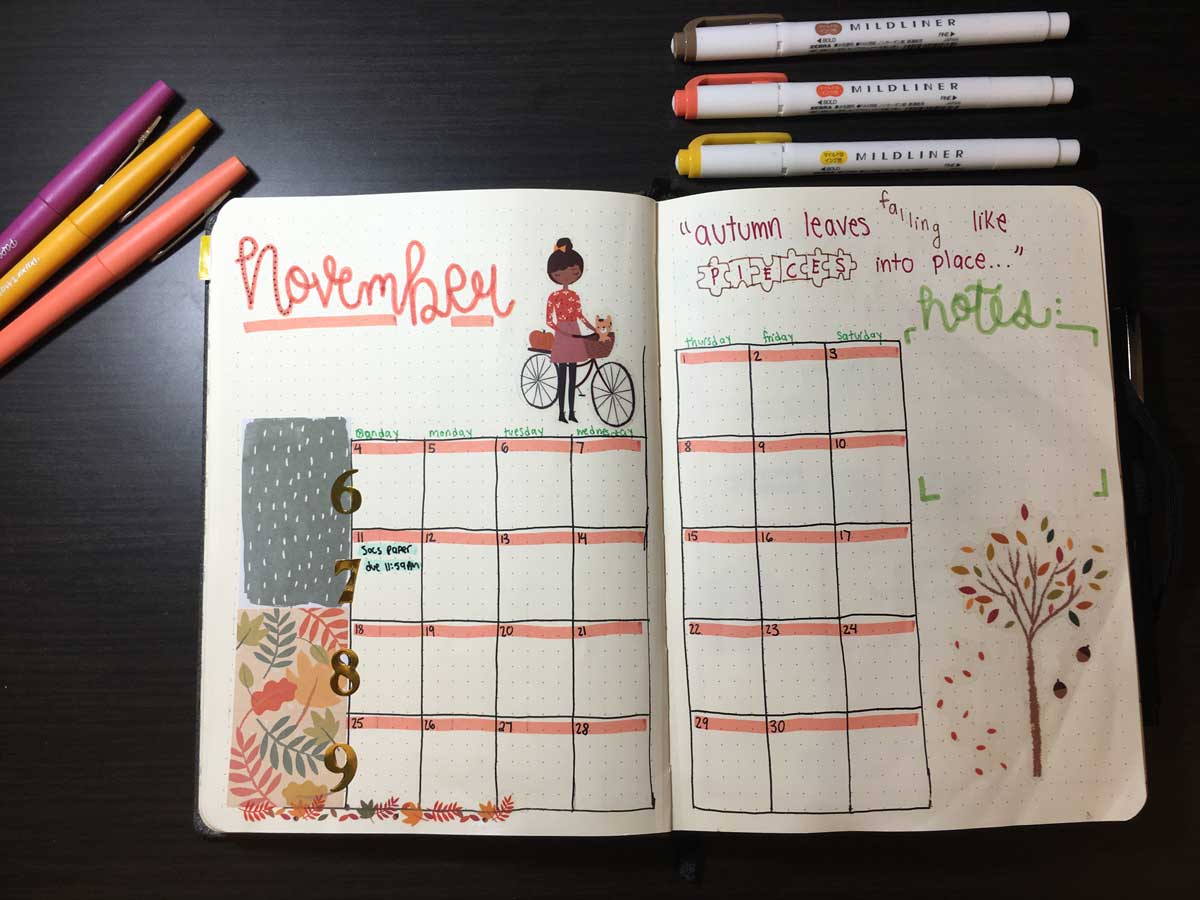
The scariest part of the process for me was drawing the very first line. I felt like I would surely mess it up! My advice to you is just to do something. If it’s not perfect, that’s okay! The best part about bullet journaling is that there’s no such thing as doing it wrong.